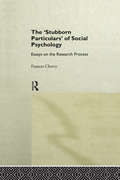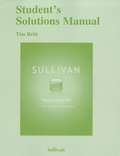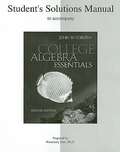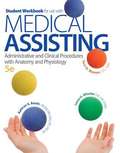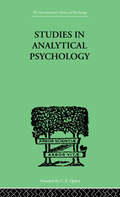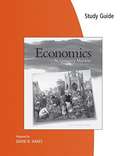- Table View
- List View
Structural Steelwork: Limit state design
by A.B. Clarke S.H. CovermanA comprehensive reference which provides the student and the engineer with in-depth guidance on design methods to the UK code of practice for structural steelwork, BS 5950. The design procedures are presented in a series of well-defined steps illustrated with worked examples.
Stuart England (2nd edition)
by J. P. KenyonStuart England is the subject of continual and active research, and Professor Kenyon's survey presents a unified picture of this contentious century, as well as featuring a full and up-to-date critical bibliography.
Stubborn Particulars of Social Psychology: Essays on the Research Process (Critical Psychology Series)
by Frances CherryThe `Stubborn Particulars' of Social Psychology gives students an alternative approach to social psychology which acknowledges the limits of shared understandings often imposed by class, race, culture, nationality, ethnicity, language and gender. Frances Cherry shows how the generation of hypotheses, experimental practice, the interpretation of results and the process of scientific communication itself are equally framed by historical and cutural context. She discusses how to begin to understand one's own biases and prejudices, and how we create and make sense of our own social psychology as an engaged social critic, rather than as some idealised `objective' scientist. The `Stubborn Particulars' of Social Psychology should be required reading for all social psychology students as an antidote to their course text.
Student Grammar of Spoken and Written English
by Geoffrey Leech Douglas Biber Susan ConradExamines patterns of use in the news, fiction and academic English Takes grammar and vocabulary together and looks at how they interact Is based on the analysis of 40-million words of British and American, written and spoken corpus text Uses over 3000 examples of real, corpus English to illustrate the points Uses frequency tables and graphs to make the new findings of this grammar clear
Student Manual for Understanding Generalist Practice (5th edition)
by Karen K. Kirst-Ashman Grafton H. Hull Vicki VogelThe Student Manual contains detailed outlines of each chapter and is filled with classroom exercises and assignments.
Student Solutions Manual For Chemistry: A Molecular Approach
by Nivaldo J. Tro Kathy Thrush Shaginaw Mary Beth KramerThe selected solution manual for students contains complete, step-by-step solutions to selected odd-numbered end-of-chapter problems.
Student Solutions Manual Trigonometry: A Unit Circle Approach 9th Edition
by Michael SullivanThis Trigonometry Solutions Manual provides fully worked solutions to odd-numbered exercises.
Student Solutions Manual for College Algebra 8
by Michael Sullivan Kevin Bodden Randy GallaherA printed manual containing full solutions to odd-numbered exercises from College Algebra 8.
Student Solutions Manual to Accompany Health Economics
by Frank A. Sloan Chee-Ruey HsiehThis student solutions manual for Health Economics provides answers to the odd-numbered exercises.
Student Solutions Manual: Single Variable
by Maurice D. Weir Frank R. Giordano Joel Hass George B. ThomasThis manual contains completely worked-out solutions for all the odd-numbered exercises in the text, covering Chapters 1 11.
Student Solutions Manual:Elementary Linear Algebra, Seventh Edition
by Ron LarsonThis Student Solutions Manual can be used as a supplement to Elementary Linear Algebra, Seventh Edition, by Ron Larson. All references to chapters, theorems, and exercises relate to the main text. Solutions to every odd-numbered exercise in the text are given with all essential algebraic steps included.
Student Success in College: Doing What Works!
by Christine HarringtonThis book offers an accessible and relevant way for students to move beyond opinions and advice about how to succeed in college by offering an integrated approach of researched back student success practices paired with student success research studies.
Student Workbook for use with Medical Assisting: Administrative And Clinical Procedures With Anatomy And Physiology
by Kathryn A. Booth Terri D. Wyman Leesa WhickerThe Student Workbook provides you with an opportunity to review and master the concepts and skills introduced in your student textbook, Medical Assisting: Administrative and Clinical Procedures with Anatomy and Physiology, Fifth Edition. Chapter by chapter, the workbook provides the following: <p><p> Vocabulary Review, which tests your knowledge of key terms introduced in the chapter. Formats for these exercises include Matching, True or False, and Passage Completion. <p> Content Review, which tests your knowledge of key concepts introduced in the chapter. Formats for these exercises include Multiple Choice, Sentence Completion, and Short Answer (including labeling). <p> Critical Thinking, which tests your understanding of key concepts introduced in the chapter. These questions require you to use higher-level thinking skills, such as comprehension, analysis, synthesis, and evaluation. Applications, which provide opportunities to apply the concepts and skills introduced in the chapter. For example, using role play, you will perform such activities as developing a personal career plan and interviewing a medical specialist. <p> Case Studies, which provide opportunities to apply the concepts introduced in the chapter to lifelike situations you will encounter as a medical assistant. For example, you may be asked to decide how to respond to a patient who calls the doctor's office to say that she is having difficulty breathing or you may be requested to give information about the thyroid gland to a patient who has just been referred for thyroid testing. <p> Procedure Competency Checklists, which enable you to monitor your mastery of the steps in the procedure(s) introduced in a chapter, such as Preparing a Patient Medical Record/Chart and Performing a Surgical Scrub. Each procedure is correlated with the CAAHEP and ABHES competencies you will need to know to become a medical assistant. Answers to the material in the Student Workbook are found in the Instructor Manual, on the Online Learning Center. <p> Procedure Work Documentation Forms, for both Administrative and Clinical procedures, are provided in a separate new section. These forms can be used when practicing and testing your skills. Make extra copies because you may use them more than once. <p> Ask your instructor for permission to check your work against these answers. <p> Together, your student textbook and the Student Workbook form a complete learning package. Medical Assisting: Administrative and Clinical Procedures with Anatomy and Physiology, Fifth Edition, will prepare you to enter the medical assisting field with the knowledge and skills necessary to become a useful resource to patients and a valued asset to employ¬ers and to the medical assisting profession.
Student's Guide to Writing College Papers (4th edition)
by Joseph M. Williams Kate L. Turabian Gregory G. ColombThis new edition is both a solid introduction to the research process and a convenient handbook to the best practices of writing college papers.
Studies in Analytical Psychology (International Library Of Psychology)
by Gerhard AdlerFirst published in 1999. Routledge is an imprint of Taylor & Francis, an informa company.
Study Guide for Gould's Pathophysiology for the Health Professions (Fifth Edition)
by Karin C. Vanmeter Robert J. HubertThe book is on the background and overview of Pathophysiology,and related topics like defence and protective mechanisms,factors contributing to Pathophysiology etc.
Study Guide for Kinn's the Administrative Medical Assistant: An Applied Learning Approach (Seventh Edition)
by Alexandra Patricia Young-AdamsThis study guide offers a complete review of content and a wide range of exercises to help you master CAAHEP and ABHES competencies.
Study Guide for Medical-Surgical Nursing: Assessment and Management of Clinical Problems, Ninth Edition "
by Sharon L. Lewis Shannon Ruff Dirksen Linda Bucher Margaret Mclean Heitkemper Susan A. SandstromPrepare for success in the classroom! Corresponding to the chapters in the 9th edition of Lewis' market-leading Medical-Surgical Nursing, this study guide offers a complete review of content and a wide range of activities to help you understand key nursing concepts. Alternate item format questions reflect the most current NCLEX test plan. To make studying easier, answers for all exercises are included in the back of the book.
Study Guide for Memmler's The Human Body in Health and Disease
by Barbara Janson Cohen Kerry L. HullThe Study Guide for Memmler's The Human Body in Health and Disease, 12th edition, helps students learn foundational concepts in anatomy and physiology required for success in allied health occupations. It will be more effective when used in conjunction with the 12th edition of Memmler's The Human Body in Health and Disease. The Study Guide may also be used to supplement other textbooks on basic anatomy and physiology.
Study Guide for Pharmacology: A Nursing Process Approach (7th Edition, Revised Reprint)
by Joyce Lefever Kee Evelyn R. Hayes Linda E. Mccuistion Nancy HaugenThis comprehensive Study Guide is designed to provide the learner with clinically based situation practice problems and questions. This book accompanies the text Pharamacology: A Nursing Process Approach, seventh edition, and may also be used independently of the text.
Study Guide: Mankiw's Principles of Economics (5th Edition)
by N. Gregory MankiwDavid R. Hakes (University of Northern Iowa) has prepared a study guide that will enhance student success. Each chapter of the study guide includes learning objectives, a description of the chapter's context and purpose, a chapter review, key terms and definitions, advanced critical thinking questions, and helpful hints for understanding difficult concepts. Students can develop their understanding of the material by doing the practice problems and answering the short-answer questions, then assess their mastery of the key concepts with the self-test, which includes true/false and multiple-choice questions.
Study It Conversation Level 1: A Conversation Book for ESL Students (Study It)
by James Rice Jamie MatechukWinner 2015 Digital Book Award - Academic Category Awarded QED Certification for Quality, Excellence and Design The Study It Conversation series is an easy-to-use speaking-based ESL textbook for ESL students, language teachers and English language programs in schools or language schools. The Study It English ESL Conversation series consists of 8 different levels and 8 different English conversation books. The Study It Conversation series consists of the following: 20 different conversation topics, vocabulary-building exercises, video and audio exercises, clear language points for each conversation topic, Communicative and Project-based learning activities. Book 1 is designed for Beginner students. Some of the conversation topics in Book 1 include: Ordering at a Restaurant, Meeting People, Time Talk, Hotel Reservations and much more. ESL Teachers can access our online community which offers teachers a chance to share ideas for improving the English class. Teachers interested in Mobile Learning, Project-Based Learning or Flipping the Classroom will enjoy the Study It series.
Study It Conversation Level 2: A Conversation Book for ESL Students (Study It)
by James Rice Jamie MatechukWinner 2015 Digital Book Award - Academic Category Awarded QED Certification for Quality, Excellence and Design The Study It Conversation series is an easy-to-use speaking-based ESL textbook for ESL students, language teachers and English language programs in schools or language schools. The Study It English ESL Conversation series consists of 8 different levels and 8 different English conversation books. The Study It Conversation series consists of the following: 20 different conversation topics, vocabulary-building exercises, video and audio exercises, clear language points for each conversation topic, Communicative and Project-based learning activities. Book 2 is designed for Beginner and Pre-Intermediate level students. Some of the conversation topics in Book 2 include: Pet Peeves, Narrating a Story, Renting a Car, Buying and Selling and much more. ESL Teachers can access our online community which offers teachers a chance to share ideas for improving the English class. Teachers interested in Mobile Learning, Project-Based Learning or Flipping the Classroom will enjoy the Study It series.
Study It Conversation Level 3: A Conversation Book for ESL Students (Study It)
by James Rice Jamie MatechukWinner 2015 Digital Book Award - Academic Category Awarded QED Certification for Quality, Excellence and Design The Study It Conversation series is an easy-to-use speaking-based ESL textbook for ESL students, language teachers and English language programs in schools or language schools. The Study It English ESL Conversation series consists of 8 different levels and 8 different English conversation books. The Study It Conversation series consists of the following: 20 different conversation topics, vocabulary-building exercises, video and audio exercises, clear language points for each conversation topic, Communicative and Project-based learning activities. Book 3 is designed for Pre-Intermediate and Intermediate students of ESL. Some of the conversation topics in Book 3 include: Like vs Dislike, Introduction to Idioms, Amazing Experiences, and On thePphone etc. ESL Teachers can access our online community which offers teachers a chance to share ideas for improving the English class. Teachers interested in Mobile Learning, Project-Based Learning or Flipping the Classroom will enjoy the Study It series.


